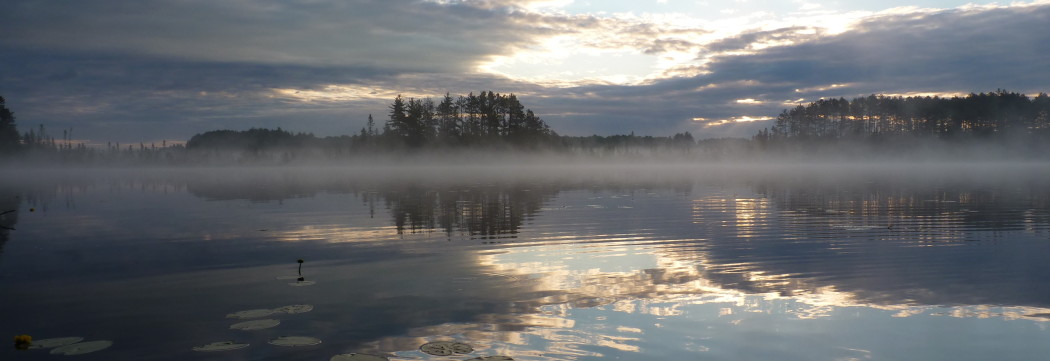
Julia Creek
Everyone who signed up for the Wilderness Canoe Immersion did so to deepen their knowledge of wilderness survival skills. But for most of us, it seemed we were there for other reasons as well. Some of us came to prove something to ourselves and some to those back home. Regardless of our differing reasons, we all had one thing in common—we knew very little about what we were about to learn:
- Basic and advanced canoe maneuvering techniques
- Efficient paddling methods
- Stealth canoeing
- Scouting for the best campsites
- Making fire by friction and advanced fire tending
- Navigating the wilderness without the help of a compass or GPS (lostproofing)
- Predicting the weather without instruments
- Primitive cooking (without the help of pots, pans, or utensils)
- Setting up a cordless tarp for shelter
- Wildlife tracking

Canoe Basics with Abel
This wasn’t going to be a normal camping trip with well-worn hiking trails, tents with poles, bonfires, and smores. This experience was meant to take us to our edge, to teach us how to survive in the wilds with very little. Our gear list included nothing more than a solo canoe, paddle, tarp, sleeping bag, clothing, towel, knife and sheath, water filter, tooth and hair brushes, and the optional pencil and journal.

Primitive Cooking
The first day was a whirlwind of activity as the wilderness guides taught us the essentials we would need for setting up camp once we were out in the wilds. Our training camp was Mashkodens (Ojibwe for Little Prairie), which is located in the Chequamegon-Nicolet National Forest about a mile’s hike from Teaching Drum. There we learned wilderness first aid and how to set up a tarp without cordage of any kind, which would serve as our tent. Abel, the senior guide for this trip, taught us basic solo canoe maneuvering techniques, so that we would be ready to navigate down Julia Creek into Julia Lake the next day to meet our transport to the Pine River. Later that night, we had our first bow-drill firemaking lesson, and we learned how to cook food primitively—and I mean primitively! We didn’t use any containers or utensils to prepare the whole delicious meal.
The next day, we woke at dawn and shared our dreams from the night. We learned that dream messages can help us to see ourselves and our circumstances in a different light, often helping us navigate through the difficult terrain of life goals and relationships. Sharing dreams helped us deepen our understanding of our own dream messages.
Each day began with dream sharing. Then we were off in our canoes down the Pine River, weaving through many Beaver dams and taking in the fall colors of Birch, Aspen, Maple, and Oak while learning more advanced stealth canoe paddling techniques.
When the sun began to set, we’d start scouting for our next campsite. The right spot had to include a good place for a hearth and nearby areas where we could each set up our tarps for the night. This was difficult for all of us at first, as our untrained eyes couldn’t see any feasible places, only a forest thick with trees and underbrush, and the ground covered with lichen-draped logs and squishy moss. The open areas were mostly bog.
Abel needed to guide our attention to potential areas. Oftentimes the hearth was far enough away from our tarps that, since we didn’t have flashlights, it was quite the adventure to find our way back and forth after dark. But the challenge was good, and we learned how to feel our way with our feet.
We also learned to navigate without a compass (called lostproofing), as well as how to predict the weather by observing which direction the wind came from, the height and speed of the clouds, and by maintaining an awareness of the changes in temperature and humidity. Wherever we paddled or hiked, we were called upon to remain focused on our surroundings, to maintain an awareness of which direction we were headed, and to be observant for signs of animal tracks.
One particular day, we were hiking in the woods and came upon a big section of leveled forest. Abel explained that once every 10 to 20 years, a severe thunderstorm will create a downdraft that levels nearly everything in its path. Hiking through such a fall zone was both mesmerizing and time consuming, as the tangle of logs and new growth made for many places to get your feet caught.

Gathering around the Hearth
As Ralph Waldo Emerson said “Do not follow where the path may lead. Go instead where there is no path and leave a trail.” Indeed, there were no paths on this trip. We created our own, and adventure and a deeper level of self-knowing met us there. We learned to work together through forest thicket, beaver dams, fall zones—and even through interpersonal friction, which occurred a few times. We emerged from the program with new skills for surviving in the wilds on very little, and the knowledge that we had proven something to ourselves and those we cared for.
To read about another participant’s experience on the 8 Day Wilderness canoe Immersion, check out Michael Jason Fox’s blog.


